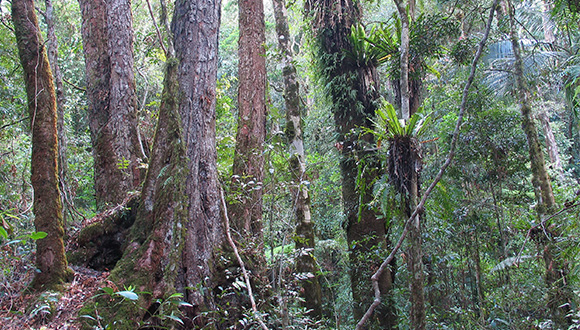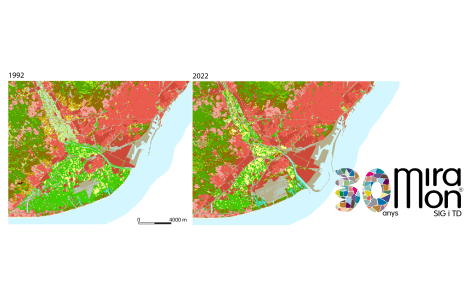Wood and leaf densities explain how forests function across the globe

Understanding ecosystem dynamics can lead to greater benefits in forest management, species conservation, and carbon sequestration. A new study puts forward results which can be generalized for the whole globe and to 53,000 tree species thanks to the large quantity of data gathered and analyzed.

Are there general rules for how trees may compete anywhere on the globe? It turns out that wood density, foliar surface mass (similar to the grammage used in measuring the weight of paper) and maximum height can explain why a given tree is a strong competitor with its neighbors. This is the result of a study published by Nature which had the participation of CREAF and CSIC researcher Josep Peñuelas. The discovery could have practical applications in forestry and forest management, biodiversity conservation, and ecosystem carbon sequestration. The results of the research can be generalized to most Earth biomes thanks to the large diversity of study sites and data obtained in the study.
“We have confirmed that these functional characteristics influence the competitive capacity of tress, and knowing what these are allows us to predict the dynamics of interactions between the world’s tree species,” says Josep Peñuelas. “Investing a large amount of resources into developing dense wood and strong leaves can mean that a tree grows more slowly, but this is a good strategy for competing with neighbors,” adds the researcher.
The discovery could have practical applications in forestry and forest management, biodiversity conservation, and ecosystem carbon sequestration.
In the study, which had the participation of nearly 40 researchers, data was analyzed from more than three million trees including 2,500 species and 140,000 study plots from around the world. This large quantity of data allows generalizations to be formulated and tendencies seen, leading to models which are applicable to any terrestrial biome. This study of tree characteristics improves understanding of the relationships between different plant species around the world. “Species with denser wood grow slower and in open areas, but they are able to cope better with competition in denser forests,” says Peñuelas. The contrast between characteristics which favor growth with and without competition allows the coexistence of different evolutionary strategies which helps explain the large diversity of tree species in the world.
Being able to predict dynamics and interactions can lead to economic, ecological, and environmental benefits.
This could lead to valuable applications in ecology and environmental protection as well as economic benefits. “Understanding the relationship between competition, growth, and these functional characteristics will help forest managers choose species.”
This could also aid the development of conservation plans for certain species, including trees but also for associated species of plants, animals, or fungi.
From the environmental point of view, “competition can have a large impact on tree growth translating to a greater accumulation of carbon. When this accumulation is in denser and more recalcitrant wood, this helps remove CO2 from atmospheric circulation for a longer period of time,” concludes Josep Peñuelas.
Article:
Kunstler, G., Falster, D., Coomes, D.A., Hui, F., Peñuelas, J., et al. Plant functional traits have globally consistent effects on competition. Nature (2015), doi:10.1038/nature16476
Notícies relacionades

L’IPBES publica dos informes per transformar la manera com ens relacionem amb la natura, conservar-la i sobreviure

L’impacte social de la recerca es consolida a la cultura científica del CREAF


